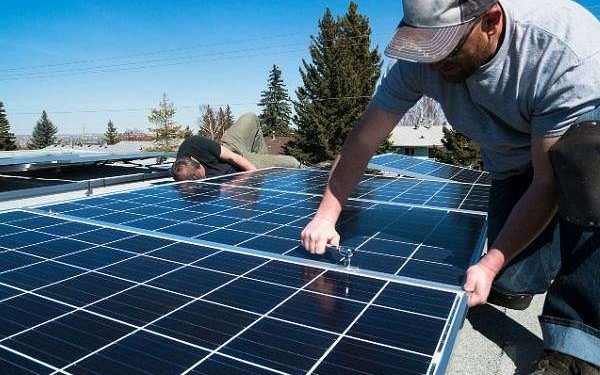Solar expansion leads renewable energy to provide over a fifth of U.S. electrical generation in 2023
by Clarence Oxford
Los Angeles CA (SPX) Feb 27, 2024
The landscape of U.S. electrical generation is witnessing a pivotal shift, underscored by the latest data from the U.S. Energy Information Administration (EIA). The SUN DAY Campaign’s review of the EIA’s most recent “Electric Power Monthly” report, covering data up to December 31, 2023, highlights solar power’s unparalleled growth streak, marking it as the nation’s fastest expanding electricity source for over a decade.
In 2023, the amalgamation of utility-scale and small-scale solar energy surged by 16.1%, with small-scale solar alone, including rooftop installations, climbing by 20.1%-the highest rate among all energy sources. Notably, December saw small-scale solar rise by 21.4% and total solar by 30.7%, indicating an accelerating growth trajectory. By the end of the year, solar energy contributed nearly six percent (5.6%) to the total U.S. electrical generation, with small-scale solar accounting for nearly a third (30.9%) of all solar generation and more than 1.7% of the nation’s electricity supply.
This surge brought solar power nearly on par with hydropower, each contributing 5.6% to the total energy mix. With this momentum, solar is expected to overtake hydropower soon, positioning itself as the second-largest source of renewable energy, trailing only behind wind.
The combination of solar and wind energy is now closing the gap with coal’s contribution to the U.S. electricity mix, which stood at 15.9%. The duo seems poised to surpass coal, especially as the collective share of non-hydro renewables (solar, wind, biomass, and geothermal) reached 17.1%, already outpacing coal, which saw an 18.8% decline compared to 2022.
Renewable energy’s ascendancy is further highlighted by its performance against nuclear power. In 2023, renewables out-produced nuclear plants by almost a quarter (24.7%), despite the modest increase in nuclear-generated electricity by 0.49%-attributed partly to the commissioning of the Vogtle-3 reactor in Georgia. Meanwhile, renewable energy sources saw a combined growth rate of 0.52%.
Overall, renewables contributed over 22.7% to the nation’s electrical generation in 2023, a slight increase from 22.4% the previous year. Solar’s robust growth, along with a 2.3% rise in geothermal power, was somewhat offset by a 2.1% decrease in wind power generation, a 5.9% reduction in hydropower, and an 8.4% decline in biomass-generated electricity.
Despite these fluctuations, renewable energy solidified its position as the second-largest source of electrical generation in the U.S., trailing only behind natural gas, which accounted for 42.4% of the total.
Ken Bossong, the executive director of the SUN DAY Campaign, remarked on the significance of these developments. “Led by solar, the mix of renewable energy sources have once again expanded their share of the nation’s electrical generation,” he noted. “They now produce significantly more electricity than either nuclear power or coal and are on track to widen the gap in the year ahead.”
This report underscores a clear trend: renewable energy, spearheaded by solar and supported by wind, is not only reshaping the U.S. energy landscape but also setting the stage for a future where clean, sustainable power sources dominate the electrical generation mix. As these trends continue, the shift towards renewable energy promises to play a crucial role in the nation’s efforts to mitigate climate change and transition towards a more sustainable and resilient energy system.
Source: Sun Day
Related Links
EIA Electric Power Monthly
All About Solar Energy at SolarDaily.com


















